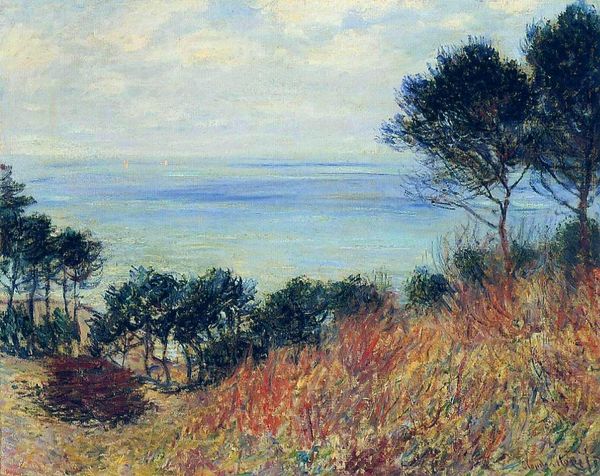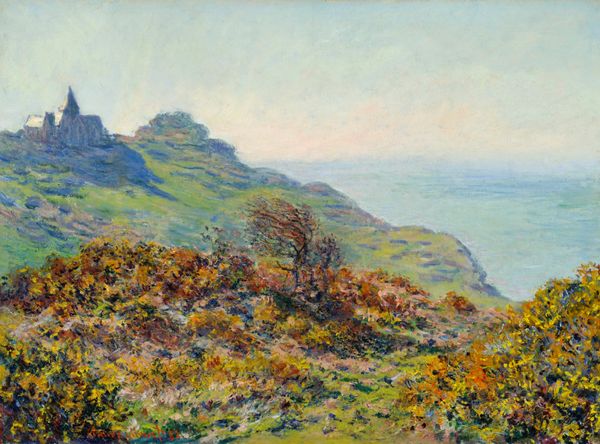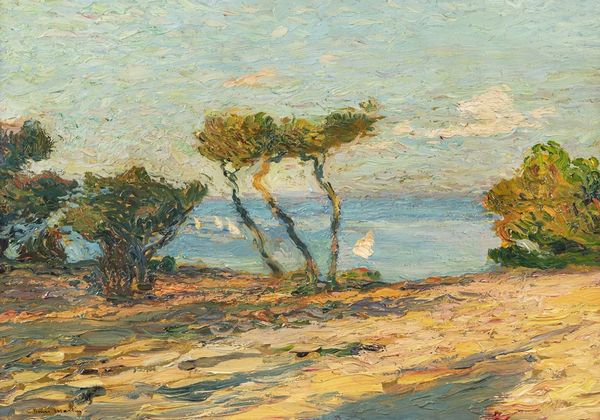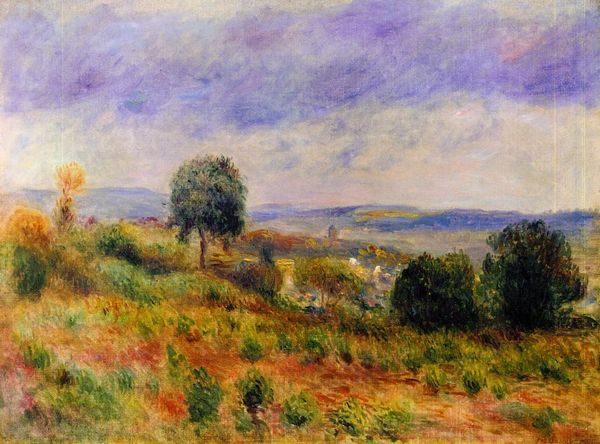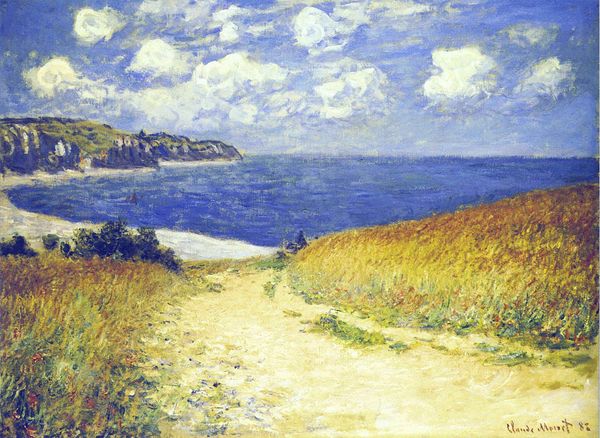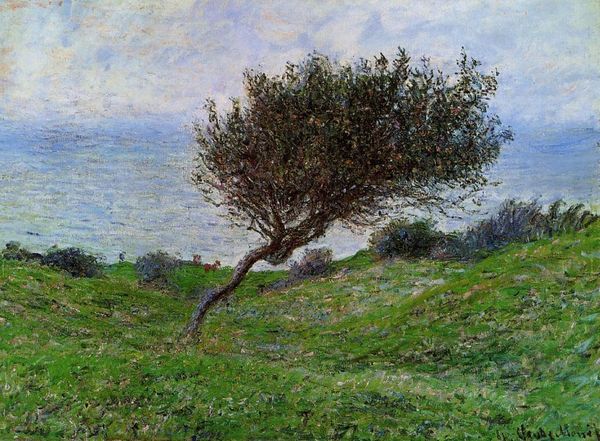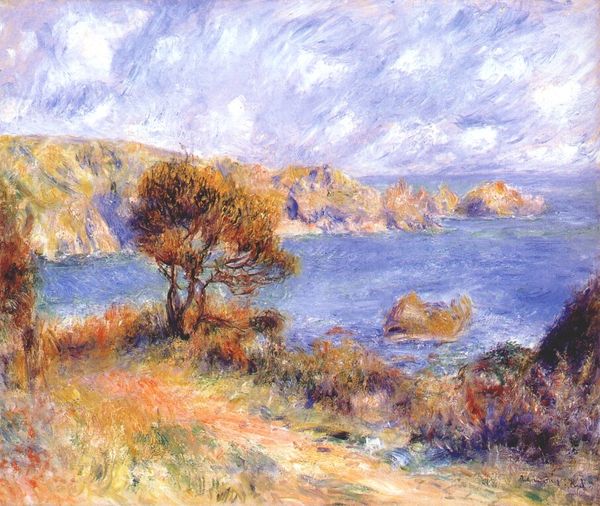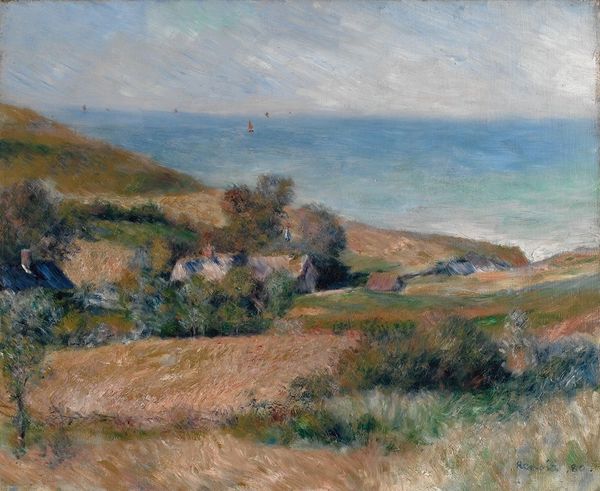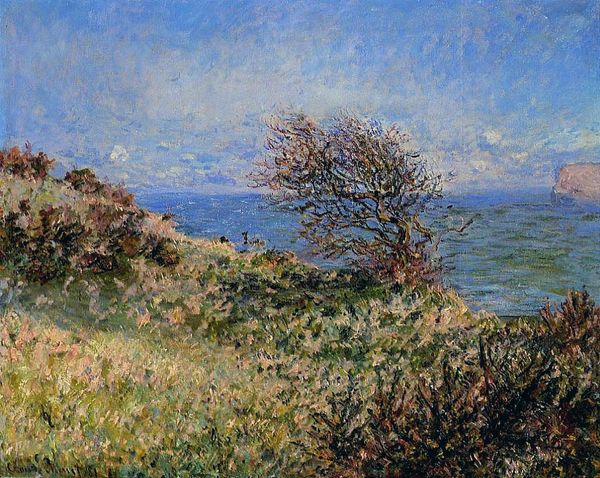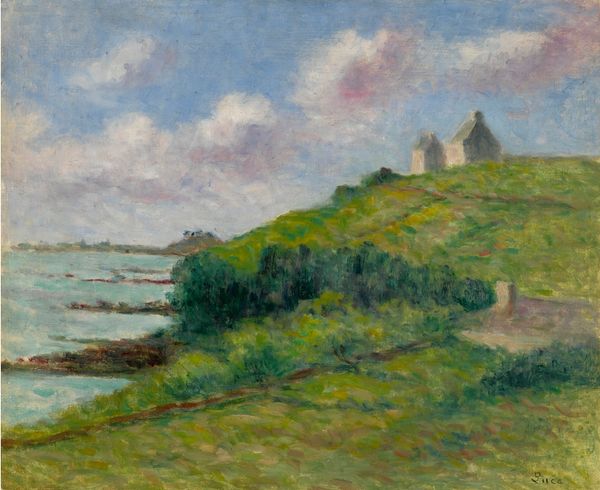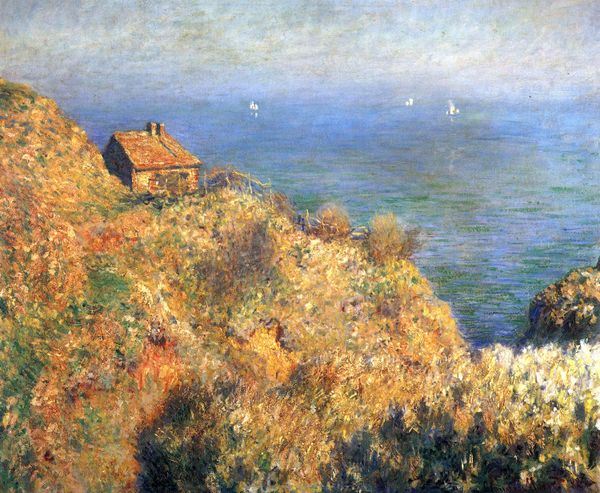
Copyright: Public domain
Editor: This is Monet's "The Church at Varengeville, Grey Weather," painted in 1882. It's an oil painting, capturing a rather somber, muted landscape. The church seems almost ghost-like in the distance. How do you interpret this work within the broader context of the time? Curator: It's crucial to recognize that this was painted during a period of intense social and political upheaval in France. The Impressionists were often criticized for not engaging with these issues directly, yet their focus on capturing fleeting moments, the impermanence of light, can be seen as a subtle critique of established power structures. Monet’s focus on the everyday, the changing atmosphere, it challenged the traditional subjects of academic art. Editor: That's fascinating. So, you're saying even landscapes can be political? Curator: Absolutely. Who decides what's worthy of representation? Why are grand historical narratives privileged over these quiet, personal observations? And consider the church itself. Its presence here invites us to question the role of religion, its dominance, within the social fabric of the time. Is Monet celebrating or questioning that authority? Editor: I see what you mean. The gray weather almost diminishes the church's importance. Curator: Precisely. It blends into the landscape, becoming less a symbol of power and more an integrated part of the natural world. Now, how does the technique – the brushstrokes, the lack of sharp detail – further inform your understanding of this potential critique? Editor: The soft brushstrokes do make it feel more ephemeral, less fixed. Like everything, even institutions, are subject to change. Curator: Exactly. And the "en plein air" aspect reinforces that, doesn’t it? Capturing a specific moment, a specific atmospheric condition that will never be replicated. It resists permanence and fixity. Editor: This has completely changed how I see Impressionism! I thought they were just painting pretty pictures! Curator: Art rarely exists in a vacuum. Considering the social and political context allows us to unlock deeper, more meaningful interpretations. We must ask "who, what, and why" to contextualize not only artwork, but our perception and taste!
Comments
No comments
Be the first to comment and join the conversation on the ultimate creative platform.

